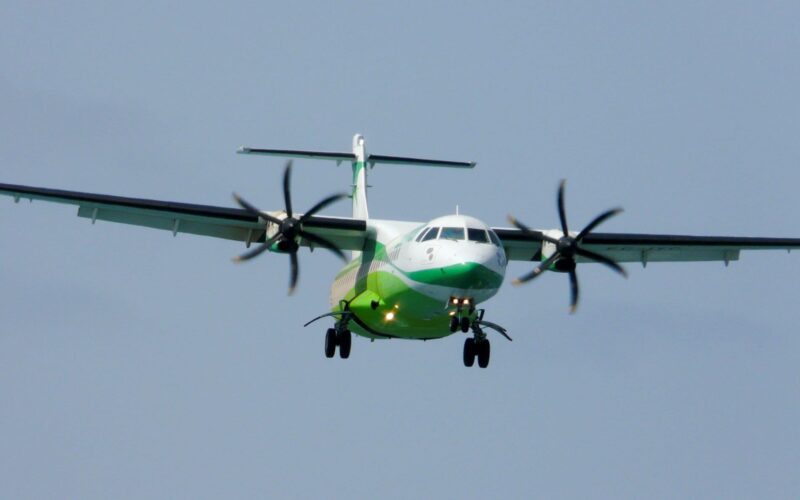On October 15, 2019, ATR 72-212A regional turboprop belonging to Canarias Airlines (operating as Binter Canarias) was taking off from Tenerife North Airport (TFN). While still on the runway, but near the rotation speed, the crew heard a strange noise. Abnormal readings on parameters of right engines followed.
The crew managed to abort the takeoff and vacate the runway. Upon inspection, it turned out that blades of the second stage of the power turbine of the right-hand Pratt & Whitney Canada PW 127M engine got detached, damaging the engine from inside, peppering the fuselage and the runway.
The report on the incident was released by the Spanish Civil Aviation Accident and Incident Investigation Commission (CIAIAC) in October 2020. According to it, the problem was caused by a single turbine blade, which fractured due to fatigue. The rest of blades then fractured due to overload, damaging the first stage of the turbine, the turbine case, and other adjacent components.
Damaged part of the turbine (Image: Spanish Civil Aviation Accident and Incident Investigation Commission)
The report states that the problem is well known and already occurred a number of times. The increased fatigue of turbine blades is associated with increased corrosion by sulfidation in hot climates. In 2015, the first Service Bulletin concerning this problem was issued, it recommended coating the leading edge of blades with chromium. This was later found insufficient, and in 2017 P&W issued another bulletin, offering to replace blades with another model and prompting operators to inspect them at the first opportunity.
Improved design of turbine blades is being worked on and planned to be released in 2021. Meanwhile, 6 similar incidents involving PW 100 engines happened in Spain since 2005, and dozens worldwide. Turbine blades on Canarias ATR 72 featured chromium coating as per 2015 bulletin, but were not inspected since installation, as this requires dismantling of the engine.
While none of passengers and crew sustained injuries in the incident, the aircraft was heavily damaged. The body of the ATR 72 had 16 nicks, scratches and perforations made by the detached blades, and over 70 metal fragments were found in the vicinity of the runway. The turbine case, while heavily deformed, was not punctured, thus containing the brunt of the damage within. As a result, detached blades left the engine through the exhaust port, still maintaining enough velocity to puncture the vertical stabilizer on the dorsal fin.


